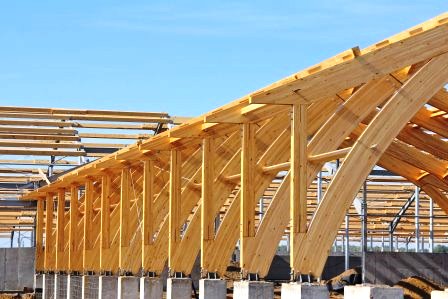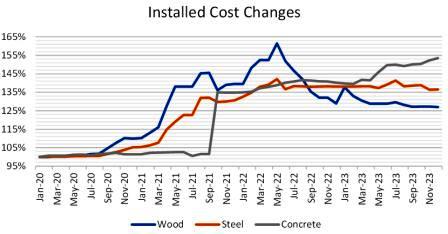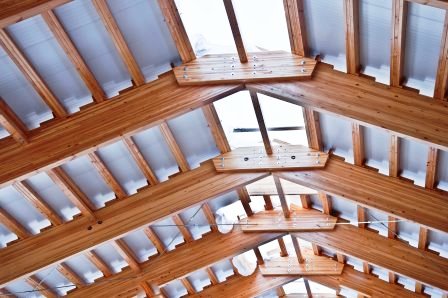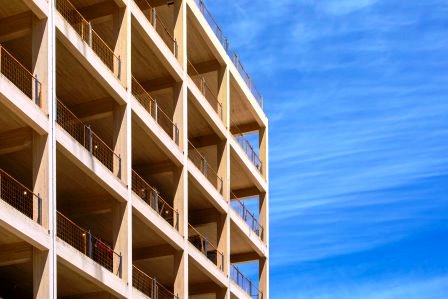

Printable PDF version
Subscribe to our newsletter
Growth of Timber Buildings
Construction Goes Techy
Markets Seek Direction
Construction
Management Specialists
San Francisco, CA
(415) 981-9430 (San Francisco office)
Orinda, CA
(415) 981-9430 (Orinda office)
Rocklin, CA
(415) 872-0996 (Sacramento office)
San Diego, CA
(858) 886-7373 (San Diego office)
Redmond, WA
(206) 571-0128 (Seattle office)
Los Altos, CA
(650) 386-1728 (South Bay office)
Los Angeles, CA
(424) 343-2652 (Los Angeles, CA office)
Wicklow, Ireland
+353 86-600-1352 (Europe office)
www.TBDconsultants.com
Mass timber buildings have been increasing in number rapidly in recent years, but they still make up a small proportion of construction projects here in the US. In our newsletter for the fourth quarter of 2018 we ran an article, in conjunction with DCI Engineers, discussing the state of mass timber construction at that time, and its uses have grown substantially since then. Government and university construction was where you'd expect to find mass timber being used initially, but now its use in commercial, residential and healthcare projects is growing. Portland International Airport is a showcase for its use in airport terminals, and it is even being used for the supporting towers of wind turbines, one turbine being nearly five hundred feet to the tip of its fiberglass blade, and the tower itself being about 345 feet tall.

While mass timber construction has been common in Europe for decades, timber construction here has mostly been stick-built low-rise projects, so the expertise for design and construction of mass timber buildings has been lacking. That shortfall is being remedied rapidly and is helped by having good communication between the onsite staff, the design team, and the manufacturers of the mass timber products. The main product that we think of when mass timber is mentioned, is CLT or cross-laminated timber, but it can also include LVL (laminated veneer lumber), LSL (laminated strand lumber), PSL (parallel strand lumber), and glulam (glue-laminated members).
Building codes are having to play catchup with this construction method. The 2021 International Building Code (IBC) has now been largely incorporated into local building codes across the US, and the mass timber provisions in that allow for its use in three construction types that go up to 18 stories. The 2024 IBC increases the allowable proportion of exposed timber in the ceilings of buildings up to 12 stories to be 100%, whereas the 2021 IBC limited it to 20%.
Timber has the advantage of being an attractive material, so the ability to have it as a self-finished structural element can result in cost savings regarding finishes. It is also lighter than steel or concrete construction, so there is the potential for savings in regard to footings. On the negative side, if the structure is being used as the finish, it would also mean that services, that would otherwise be hidden behind a suspended ceiling or other finish (such as ductwork for the HVAC system), must now be designed to look attractive. That will add to the cost. Also on the negative side is the issue that there has been little experience with this type of construction, which can make it look like a higher risk factor for contractors.

The costs of the various materials used for structural purposes all vary over time, and the pandemic, with its related supply-chain issues, resulted in fairly dramatic cost variations, with timber showing some particularly large swings. But currently the cost of timber has settled down in a more advantageous position in regard to steel and concrete than it had before Covid-19 started affecting the supply chain. As more buildings begin incorporating mass timber in the design, there is also the economic driver of economy-of-scale coming into play and bringing costs down.
Mass timber, which usually has at least a reasonable amount of prefabrication involved, can shorten the onsite construction schedule and minimize the effects of adverse weather. But we are talking about a product that can be sensitive to moisture, so a good moisture management plan needs to be implemented.

Building owners benefit from being able to use the building early because of the shortened construction schedule, and the aesthetic appearance of timber, along with the fact that is ecologically friendly, attracts and retains tenants more effectively than other structural systems. A full lifecycle cost analysis would be needed to try and quantify the value of these differentiators.

One of the main selling points for this type of construction is the fact that it uses a renewable resource that locks up carbon, and therefore helps us address the climate crisis. It is claimed to produce 30% less carbon dioxide emissions than concrete buildings and 50% less than steel. If carbon credits can be taken into account, that should make mass timber much more competitive on the basis of cost. Mass timber can certainly help with the LEED certification. That said, there can be reservations about how "green" it is. For mass timber construction to be really helping the climate and the environment, the timber needs to be sourced from an ecologically well-managed forest. The forest needs to be sustained and developed by ensuring that new trees are planted to replace those that are cut down, and care needs to be taken in selecting which trees are logged in order to maintain the ecosystem. What happens to the timber at the end of the building's life is another consideration.
Mass timber construction has been seeing exponential growth in the US in recent years due to both its aesthetic appeal and its lighter onsite work demand - a welcome benefit in light of labor shortages.
Here we examine the ways technology is changing the design and construction process.
With inflation stubbornly refusing to go down fast enough and keeping interest rates high while the market remains strong, we try to ascertain what it all means for construction.
Design consultant: Katie Levine of Vallance, Inc.